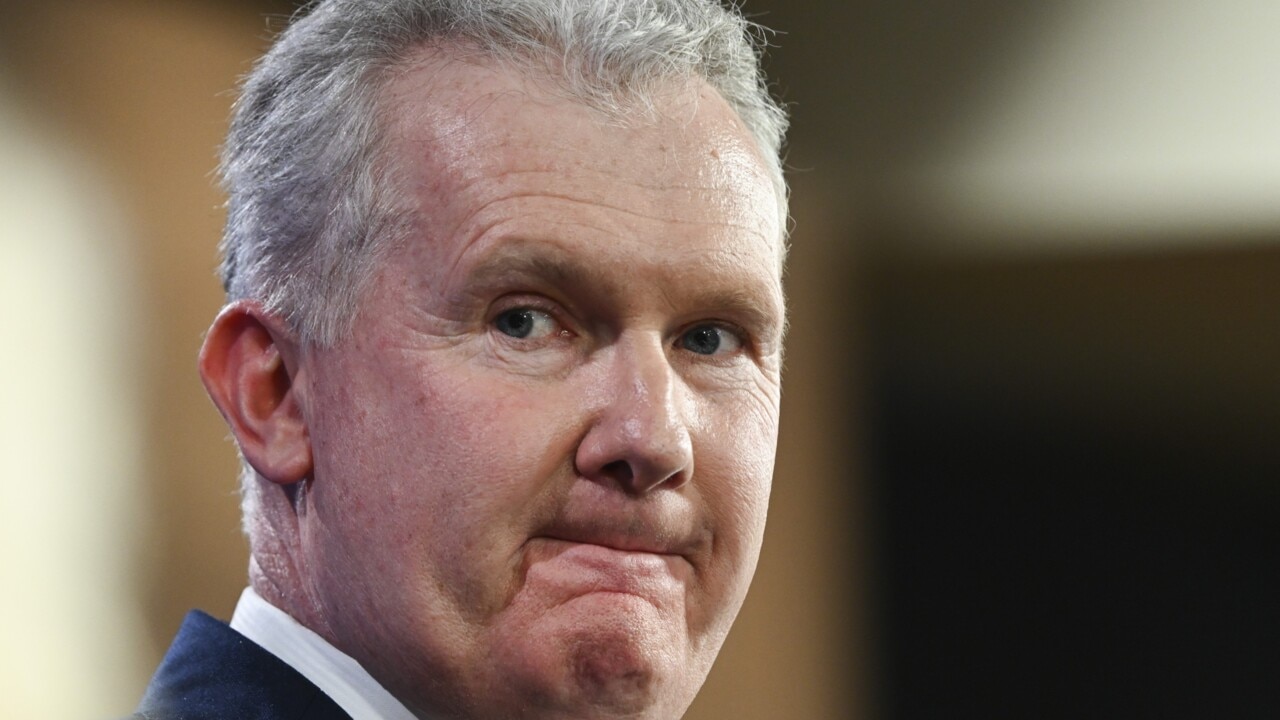NBN poised for growth despite mounting losses as it harnesses AI, CEO says
The government-owned telco’s losses have jumped by more than one third as it struggles to increase average revenue per user past $47.

NBN Co chief executive Stephen Rue says demand for ultra-fast broadband is continuing to surge as the government-owned telco takes more orders for fibre than it can connect, setting it up for future success and eventual profits.
Mr Rue said fibre broadband was still popular, despite facing increasing competition from 5G. He also defended the company’s mounting losses, which soared to $692m in the half year to December 31, as well as a $400m surge in capital expenditure, saying he made “no apology” for investing in the network.
He expected a dramatic turnaround in NBN’s fortunes in the years to come and to recoup some of its debt, citing rising demand for data and faster internet connectivity, and is looking to deploy AI to become more efficient.
“At the beginning of a half, we were taking around 3000 upgrade orders per week. It's now, 7000 orders per week and momentum is growing,” Mr Rue said, adding orders were growing faster than NBN could meet demand.
“Last week, we physically connected about 6000 premises and that continues to grow. Clearly at the moment we've got some challenges around weather conditions in Queensland, which has meant we've allocated some resources to assurance activities, but as I said last week, 6000. We continue to scale that through our own workforce, through our delivery partners … in the field and processes with our retail partners.”
Overall revenue firmed 5 per cent to $2.75bn, following increased business customer demand. But the company failed to increase the average revenue per user, which sits at 2022 levels of $47. Mr Rue expected revenue per customer to remain flat throughout this financial year.
“We’ve actually reduced the wholesale price of five out of our six residential speed tiers, and the one that did increase our 50/20Mpbs – from $45 to $50 includes 34 per cent more included data, and a ceiling that caps wholesale charges at $55 per customer in fiscal 2024. To be clear, on average across the industry, that represents a 2 per cent increase, significantly less than the rate of inflation.
“What you would expect to see is more consumers on higher speeds over time, and you would therefore expect to see our average revenue per user grow.”
Mr Rue said a surge in capital expenditure – which rose $457m to$1,86bn – was core to telco’s strategy.
“We are investing in fibre, in 5G, fixed Wireless and our transit network to serve a strong demand.
“We are seeing now, and expect to see in the years ahead, higher speeds and exponentially more data. This is a growth business, it’s a great business.”
This was despite more than 30,000 “brownfields” ditching their NBN service in the past year. “The main reason for that is service and a desire for faster speeds,” Mr Rue said, citing increased competition.
“Customers who are at the end of the FTTN (fibre to the node) line can sometimes experience … 25 megabits per second, but they can’t experience a faster speed. And obviously there are some copper lines that have unreliability or perceived unreliability, and that’s what we see moving off.
“That is one of the many reasons why we're upgrading to fibre to provide that capability for customers to get that increased reliability and to get the increased speeds that they desire. I should say it's a very small percentage of our footprint when we talk about 8.6 million customers and that the number of customers on our network continues to grow.”
Mr Rue said about 200,000 Australian premises had upgraded to NBN’s full fibre service. More than 8.4 million premises, or 75 per cent of the fixed line network, are eligible to access the NBN Home Ultrafast speed tier, which Mr Rue said was “a remarkable outcome”. “These customers can now gain access to peak wholesale download speeds of 500 Mbps to close to 1 Gbps.”

It comes as NBN research showed the amount of data the average household consumed had grown tenfold over the last decade.
In 2013, the average home consumed 40Gb and had seven connected devices. In 2023 that grew to 481GB and 22 connected devices. By 2030 as more consumer appliances get smart upgrades and Wi-Fi connectivity, that figure will grow to 40, Mr Rue said.
But NBN’s half year net loss sank a further $252m to $692m, and the company has yet to pay the government a dividend since it was established in 2009.
Mr Rue, however, said he was looking at deploying AI to make NBN more efficient.
“A telco business is very data rich, of course, so there are opportunities for us to use AI in many ways for customers but also to enable us to do things more quickly within the organisation.
“We have a team that works between our software development team and our data team who are looking at ways in which we can best use machine learning and AI, and eventually generative AI in our business.”
Asked how NBN Co planned to compete with the likes of Telstra, Optus and Starlink in the satellite market, Mr Rue said the telco was focused on upgrading fibre in areas that were once only could connect via satellite.
“The fixed wireless upgrade we’re doing has enabled us to do two things, one is to provide faster speeds, but the other is to expand the footprint of fixed wireless by a further 120 000 premises,” he said.
“(This has resulted in us) reducing the footprint that’s covered by satellites from around 400,000 homes to 300 000 homes. Because there are fewer people covered by satellite, we can provide what we’ve just actually launched, which is no data caps anymore and faster speeds.”
Staff expenses fell $32m to $297m after an aggressive restructure in June which saw up to 500 job cuts – about 10 per cent of its total workforce.
Chief financial officer Philip Nox told investors that the restructure was part of a plan to simplify internal operations.
“NBN Co continues to focus on achieving cost efficiencies through simplification and digitisation of its internal operations,” he said.
NBN’s average cost of drawn debt grew to 3.3 per cent, up from 3.17 per cent as of June. The company said higher interest rates were to blame, which were impacting its unhedged floating debt portfolio as well as newly issued interest-bearing debt and associated derivatives.
In regard to service performance, NBN said it was able to resolve 92 per cent of faults within “agreed time frames”.
“The Telecommunications Industry Ombudsman’s 2022-23 Annual Report stated complaints for services over the NBN network regarding faults and connections were down by 35 per cent compared to the prior period, further supporting the improvement in NBN Co’s customer experience,” the telco said.







To join the conversation, please log in. Don't have an account? Register
Join the conversation, you are commenting as Logout